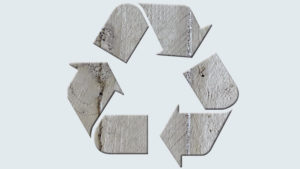Chemicals and materials companies have begun to adopt circular economy

Though interest is clearly high, more than half of those surveyed (57 percent) design under a quarter of their products according to circular economy principles – illustrating that while many companies understand the need for a circular economy model, they are still in the very early stages of implementation. However, there is a cause for optimism – almost two thirds (61 percent) of respondents expect more than 50 percent of their products to be designed according to the principles by 2030. To reach this goal, it’s clear that chemicals and materials companies will need to change the way they approach the circular economy to ensure that those working in the industry can make this shift a reality.
“The circular economy is no longer optional for businesses, it’s crucial in the fight against climate change and the move towards a greener, cleaner economy,” commented Nina Kaun, Director of Product Management at Elsevier. “This sentiment is clearly felt by many law- and policy-makers, with the EU commissioner recently announcing that the circular economy must be at the heart of COVID-19 recovery plans. This message was also echoed by the global Ellen Macarthur Foundation. The COVID-19 pandemic has made companies and consumers alike change their outlook, and chemicals and materials companies need to seek out material alternatives and invest in R&D that supports the circular economy.”
The survey findings also show that the adoption of circular economy principles is driven primarily by social pressure, with almost half (43 percent) of respondents naming both regulatory and consumer pressure as key reasons for adopting the principles. However, the survey finds there are a number of barriers holding back the implementation of circular economy initiatives; the biggest being cost (19 percent), followed by cultural resistance to change (13 percent) and low investment in R&D (13 percent). To overcome these hurdles and address the perceptions of consumers and regulators alike, businesses need help to anticipate the costs, risks and commercial feasibility, as projects with a strong business case and cost efficiency are more likely to succeed.
A significant element of the circular economy model is green chemistry; of its 12 principles, one aim is to phase out the use of dangerous and toxic materials. When asked about the drivers for green chemistry, respondents identified a number of factors, including safety of staff (27 percent), safety of end-product users (26 percent), reduced environmental impact (22 percent) and improved regulatory compliance (25 percent). PFAS, also known as ‘forever chemicals’ (chemicals that don’t degrade naturally, such as Teflon or ScotchGard), are one of the biggest problems in this area – 99 percent of Americans have been found to have PFOS and PFOA (two well known, harmful forms of PFAS) in their blood, and the numbers are thought to be similar all over the world.
Nina Kaun added, “Removing these toxic chemicals from use quickly is essential for both public health and safety, but when toxic chemicals are phased out, companies need to ensure they are replaced by other substances with the right properties and that will cause minimal impact on the environment. Companies also need to be aware of the shifting regulations and compliance risk around these chemicals – as more research is undertaken into the health and environmental implications, the regulations are changing to match. Chemical manufacturers must now ensure they understand the regulatory nuances in each market, the impact on their key product lines, and how this changes their information needs. Achieving all of these goals is a complex undertaking, and it requires innovation and creativity. We can only move towards a cleaner industry by equipping chemicals and materials researchers with all the knowledge they need – ranging from toxicology data, to sourcing quotes, to real-time market news.”
Elsevier conducted the survey between January and April 2020 with 182 respondents in Chemicals and Materials businesses, in R&D, manufacturing & operations, and environment, health and safety roles.